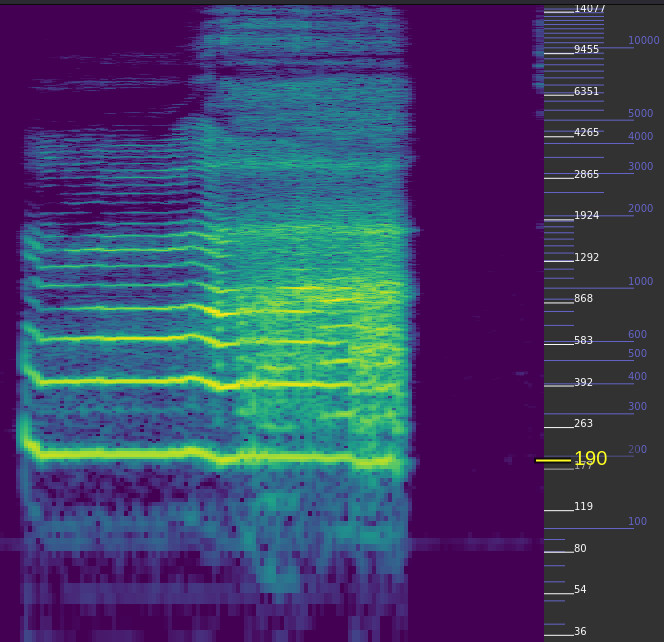This site is under construction! Stuff be missing, beware! Contribute!
If you have additions, corrections or concerns, open an issue or contact a maintainer.
Voice Map is released! See here for a giant map of (almost) all voice characteristics and pedagogy!Table of contents
FVF

FVF or False Vocal Folds are the ventricular folds, just above the true vocal folds. When stressed, swallowing or holding our breath tightly, these constrict and close to protect the true folds. In older voices, we hear FVF more because the true folds have atrophied and over time lost the ability to function correctly, so the false folds pick up the lost closure.
The false folds should not be activated in normal speech.
There are commonly two problems associated with false fold constriction, FVF closure conflation and passive FVF constriction.
FVF closure conflation
This is where the false folds are constricted when we try to add true fold closure. If left unchecked it can be very difficult to remedy. There are signs of this that you can check on fortunately.
Checking for FVF Closure Issues
- hold your breath as lightly as possible.
- breath out (you should notice a very slight pop)
- if this pop is easily heard, you probably have FVF closure coming in
- use glottal taps like we just did, and make the sound lighter and lighter, focusing on keeping a consistent stream of air. Don’t use less air to make it softer, use more to challenge yourself to do it correctly
Good glottal taps:
Constricted glottal taps:
Passive FVF Constriction
This is where the voice constantly sound rough and hoarse. We can check for passive FVF in a few ways.
Using Quiet Breathing to Reduce FVF constriction
We can use quiet breathing as a way to reduce false fold constriction because the loudness of a breath is directly tied to the amount of restriction in the throat; which is what adding false folds does.
It is very important that we stay relaxed in this exercise. If we add effort in any way it could encourage some things we definitely don’t want.
- Breathe in and out normally
- Breathe in and out again, but make it silent and airy
- this is similar to when blowing out a candle
- Breathe out again
- in the middle of the out breath say “ah”
- don’t try to change pitch
- leave the “ah” as the default position with no effort
- this is similar to a sigh
- Breathe out again
- this time change the pitch to the target pitch
YouTube - click to load the iframe
Using light phonation
- use a very light humming sound
- make it lighter
- is there a roughness or “rattle”?
- yes -> probably constricted
- no -> probably not constricted
Unconstricted hum:
Constricted hum: